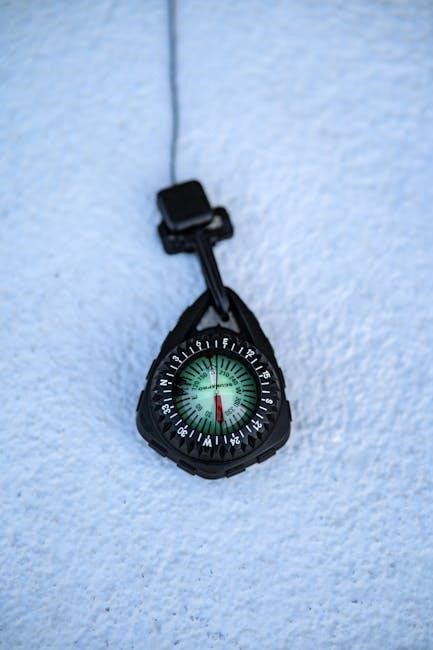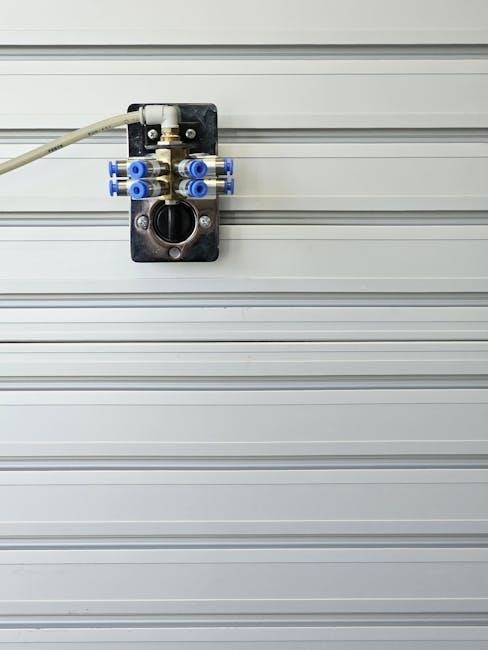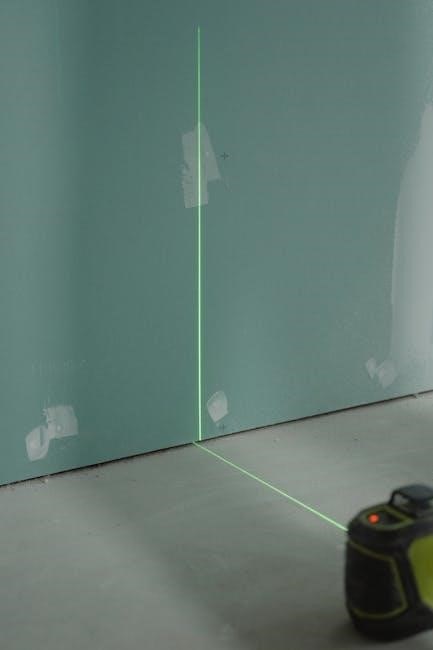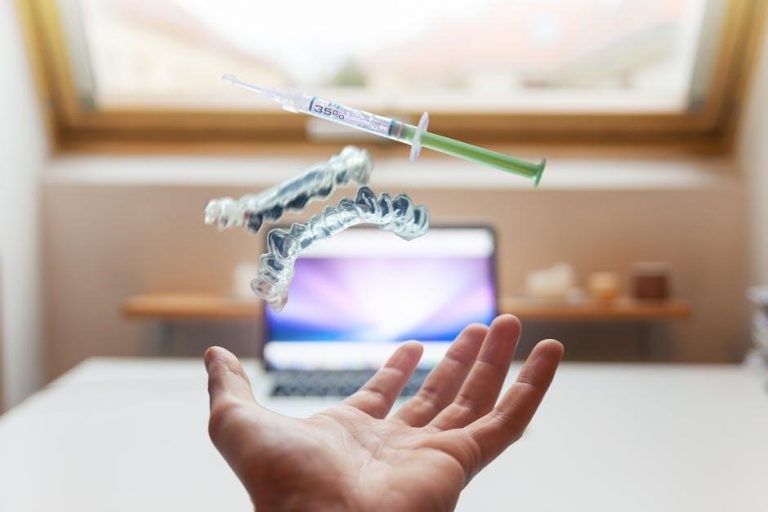Valve guide removal tools are essential for automotive repairs, enabling efficient removal and installation of valve guides. Available in manual, pneumatic, and universal designs, they ensure precise, damage-free operations.
1.1 Overview of Valve Guide Removal Tools
Valve guide removal tools are specialized instruments designed to safely and efficiently remove and install valve guides in engine cylinder heads. These tools are available in various forms, including manual, pneumatic, and universal designs, catering to different engine types and repair scenarios. They typically consist of heat-treated rods, punches, and drivers, ensuring durability and precision. The tools are designed to handle both straightforward and stubborn valve guides, often incorporating adjustable features to accommodate various valve guide sizes. Their primary purpose is to prevent damage to surrounding engine components while ensuring proper fitment and alignment during the removal and installation process.
1.2 Importance of Valve Guide Removal in Automotive Repair
Valve guide removal is a critical step in automotive repair, ensuring proper engine functionality and preventing further damage. Worn or damaged valve guides can lead to oil leakage, increased emissions, and reduced engine performance. Removing faulty guides allows for inspection and replacement, preventing more severe issues like cylinder head damage. Proper removal also ensures accurate installation of new guides, maintaining engine efficiency and longevity. This process is essential for maintaining optimal engine performance and preventing costly repairs down the line, making it a cornerstone of effective automotive maintenance.
Types of Valve Guide Removal Tools
Valve guide removal tools come in various types, including manual, pneumatic, and universal designs. Each offers unique advantages, catering to different engine needs and repair scenarios effectively.
2.1 Manual Valve Guide Removal Tools
Manual valve guide removal tools are cost-effective and straightforward to use, relying on mechanical force rather than pneumatic power. They often include punches and drivers designed to fit various valve guide sizes. These tools are ideal for small-scale repairs and situations where portability is essential. A straight punch is commonly used for initial removal, while stepped punches handle more stubborn guides. Manual tools are particularly popular among classic car enthusiasts and DIY mechanics, as they require minimal setup and are easy to store. They are also suitable for engines with limited clearance, making them versatile for different repair scenarios.
2.2 Pneumatic Valve Guide Removal Tools
Pneumatic valve guide removal tools are designed for efficient and powerful removal of stubborn or corroded valve guides. These tools utilize compressed air to deliver consistent force, reducing the risk of damage to surrounding engine components. They often come with heat-treated rods for durability and adjustable designs to accommodate various engine types. Pneumatic tools are particularly effective for heavy-duty applications, such as in trucks or industrial engines, where manual methods may be insufficient. Their precision and speed make them a favorite among professional mechanics, ensuring quick and reliable valve guide extraction without compromising engine integrity.
2.3 Universal Valve Guide Removal Tools
Universal valve guide removal tools are versatile solutions designed to fit a wide range of engines and valve guide sizes. These tools are ideal for mechanics working on various vehicle types, from classic cars to modern engines. Made with durable, heat-treated rods, they ensure longevity and reliability. Universal tools often include adjustable components, allowing for precise alignment and secure removal without damaging the cylinder head. Their compatibility with different valve guide diameters makes them a cost-effective option for workshops handling diverse automotive repairs. Popular among professionals, these tools simplify the removal process, ensuring efficiency and accuracy across multiple applications.
2.4 Valve Guide Drivers for Installation and Removal
Valve guide drivers are specialized tools designed for both the removal and installation of valve guides, ensuring precise fitment and alignment. These drivers often feature heat-treated, durable rods that withstand the forces applied during engine repairs. They are available in various sizes to accommodate different valve guide diameters, making them versatile for multiple engine types. Drivers are particularly useful for pressing out old guides and seating new ones securely, minimizing the risk of damage to the cylinder head. Their dual functionality makes them indispensable for mechanics, offering a reliable solution for both extraction and installation processes in automotive maintenance.
Key Features of Valve Guide Removal Tools
Valve guide removal tools feature durable, heat-treated rods for longevity, adjustable designs for versatility, and compatibility with various valve guide sizes, ensuring precise and efficient operations.

3.1 Durable and Heat-Treated Rods for Longevity
Valve guide removal tools often feature durable, heat-treated rods designed for extended lifespan. These rods, typically made from high-strength materials, resist deformation and wear, ensuring consistent performance. With diameters ranging from 5-11 mm, they cater to various engine types. Heat treatment enhances their structural integrity, allowing them to withstand the rigors of repeated use in challenging automotive environments. This durability minimizes the need for frequent tool replacements, making them a cost-effective solution for professional mechanics and DIY enthusiasts alike. The robust construction ensures reliable operation, even when dealing with stubborn or corroded valve guides.
3.2 Adjustable and Versatile Designs for Various Engines
Valve guide removal tools are designed with adjustable and versatile features to accommodate different engine types and sizes. Universal kits often include interchangeable tips or sockets, allowing mechanics to handle various valve guide diameters. These tools are compatible with both metric and SAE measurements, making them suitable for a wide range of engines, from classic vehicles to modern heavy-duty trucks. Their adaptability ensures precise fitment, reducing the risk of damage to surrounding components. This versatility makes them indispensable for professionals working on diverse automotive projects, providing efficient solutions for valve guide removal and installation across different engine configurations.
3.4 Compatibility with Different Valve Guide Sizes
Valve guide removal tools are designed to accommodate various valve guide sizes, ensuring compatibility across different engines. Many tools feature interchangeable tips or adjustable fittings, allowing them to handle diameters ranging from 5-11 mm. Universal kits often include multiple rods or sockets to fit both metric and SAE measurements, catering to a wide range of engine types. This compatibility ensures precise fitment, reducing the risk of damage during removal or installation. Whether working on classic engines or modern vehicles, these tools adapt to diverse valve guide sizes, making them essential for mechanics and technicians handling varied automotive projects.
The Process of Removing Valve Guides
Removing valve guides involves preparing the engine, using a punch for initial loosening, applying pneumatic hammers for stubborn guides, and ensuring precise extraction with specialized tools.
4.1 Preparing the Engine for Valve Guide Removal
Preparing the engine for valve guide removal involves cleaning the area around the cylinder head to prevent debris interference. Drain cooling fluids and disconnect components like spark plugs or fuel lines to access the guides. Use a straight or steeped punch to mark and loosen the guides. Ensure the engine is cool to avoid damage. Safety gear, including gloves and goggles, is essential. Inspect for corrosion or damage before proceeding. Specialized tools, such as heat-treated rods and pneumatic hammers, are often required for efficient removal. Proper preparation ensures a smooth and damage-free process.
4.2 Using a Punch for Initial Removal
Using a punch is a common first step in valve guide removal. A straight or steeped punch is typically used to create a starting point for extraction. Gently tap the punch into the guide’s opening to mark it, ensuring alignment. This helps prevent slipping and potential damage. For stubborn guides, a pilot punch can be used to create a small indentation. Light hammer taps on the punch loosen the guide, making it easier to remove. Avoid excessive force to prevent cylinder head damage. This method is simple and effective, often eliminating the need for specialized tools initially.
4.3 Applying Pneumatic Hammers for Stubborn Guides

Pneumatic hammers are invaluable for removing stubborn valve guides that resist manual or punch-based methods. These tools deliver controlled, repetitive force to loosen and extract stuck guides without excessive damage. Start by securing the guide with a punch or pilot tool, then apply the pneumatic hammer to vibrate and break the guide’s bond. Use caution to avoid striking surrounding components. Heat-treated rods and durable designs ensure longevity. Regular maintenance of the pneumatic tool is essential for consistent performance. This method is particularly effective for corroded or deeply seated guides, making it a reliable solution in challenging automotive repair scenarios.
4.4 Final Extraction and Inspection
After loosening the valve guide, use a punch or extraction tool to carefully remove it from the cylinder head. Ensure the guide is completely free from the bore to avoid breakage. Once removed, inspect the area for any remaining debris or damage. Clean the bore thoroughly to prepare for the new guide installation. Inspect the removed guide for wear or corrosion to assess the need for further repairs. Proper extraction and inspection ensure a smooth installation process and prevent future engine issues. This step is critical for maintaining engine performance and longevity.

Installing New Valve Guides
Install new valve guides using specialized drivers, ensuring proper alignment and fitment. This step is crucial for maintaining engine performance and preventing future damage or leaks.
5.1 Aligning the New Valve Guide
Aligning the new valve guide is a critical step in the installation process. Ensure the guide is properly seated and aligned with the cylinder head. Use a driver tool to guide the valve into position, verifying it fits snugly without force. Proper alignment prevents damage to the cylinder head and ensures optimal engine performance. Measure the guide’s position to confirm accuracy, and avoid over-tightening, which could cause misalignment. This step requires precision to maintain engine integrity and functionality. Always refer to the manufacturer’s specifications for correct alignment procedures.
5.2 Using Drivers for Proper Installation
Using drivers is essential for the proper installation of valve guides. These tools ensure the guide is seated correctly and aligned with the cylinder head. Pneumatic or manual drivers are commonly used, offering precise control. Heat-treated rods in drivers provide durability and resistance to deformation. When installing, apply steady pressure to avoid tilting the guide, which could cause damage. Ensure the driver is compatible with the valve guide size for a snug fit. Proper use of drivers minimizes the risk of cylinder head damage and ensures accurate alignment. Always follow manufacturer guidelines for optimal results and engine performance.
5.3 Ensuring Correct Fitment and Alignment
Ensuring correct fitment and alignment is crucial when installing new valve guides. Proper alignment prevents engine damage and ensures optimal performance. Use measurement tools to verify the guide’s position relative to the cylinder head. Compatibility with the engine’s specifications is vital to avoid misalignment. Heat-treated rods and universal tools help achieve precise fitment. After installation, inspect the guide for any signs of tilting or uneven seating. Correct alignment ensures proper valve operation and prevents premature wear. Always refer to manufacturer guidelines for specific engine requirements to guarantee accurate and secure installation of the valve guides.

Safety Tips and Best Practices
Always wear protective gear, including gloves and safety glasses, when using valve guide removal tools. Avoid damaging cylinder heads by using precise, controlled movements. Properly maintain tools to ensure reliability and safety during repairs.
6.1 Wearing Protective Gear During Removal
Wearing protective gear is crucial when using valve guide removal tools to ensure safety. Safety glasses and gloves protect against flying debris and tool slippage. A face shield adds extra protection, especially when using pneumatic tools. Steel-toe boots and proper work attire prevent accidents. Always ensure gear fits well and is in good condition. Using substandard equipment can lead to injuries. Proper storage of tools after use prevents tripping hazards. Adhering to these practices ensures a safer working environment and minimizes risks during valve guide removal processes.
6.2 Avoiding Damage to Cylinder Heads
Avoiding damage to cylinder heads is critical during valve guide removal. Using the correct tool size prevents excessive force, which can crack or warp the head. Ensure proper alignment of tools to avoid slipping and scratching surfaces. Apply even pressure and avoid hammering directly on the cylinder head. Inspect tools for damage before use to prevent unintended marks. Using heat-treated, durable rods minimizes the risk of breakage. Regular lubrication of tools reduces friction and prevents overheating. Always follow manufacturer guidelines for tool usage to safeguard the engine components during the removal process.
6.3 Proper Storage and Maintenance of Tools
Proper storage and maintenance of valve guide removal tools are vital for their longevity. Store tools in a dry, clean environment to prevent rust and corrosion. Use protective cases or pouches to avoid damage. Regularly clean tools with solvent and lubricate moving parts to ensure smooth operation. Inspect tools for wear or damage before and after use, replacing worn components promptly. Organize tools in a designated area to prevent misplacement. Follow manufacturer guidelines for maintenance to uphold tool performance and reliability. Proper care ensures tools remain in optimal condition for future automotive repair tasks.

Tools and Equipment Required
Valve guide removal requires specialized tools, including removal tool sets, pneumatic hammers, punches, and measurement tools. These ensure precise, efficient, and safe removal and installation processes.
7.1 Valve Guide Removal Tool Sets
Valve guide removal tool sets are comprehensive kits designed for efficient removal and installation. Typically, they include multiple rods of varying diameters (5-11 mm), heat-treated for durability. These sets often come with pneumatic hammers and punches, ensuring versatility for different engine types. Universal compatibility allows them to fit various valve guide sizes, making them ideal for both professional mechanics and DIY enthusiasts. The tools are crafted from high-quality materials, ensuring longevity and reliability. Some sets also include drivers for installation, aligning with the need for precision and ease of use. These tool sets are indispensable for automotive repair tasks.
7.2 Pneumatic Hammers and Punches
Pneumatic hammers and punches are indispensable for tackling stubborn or corroded valve guides. These tools deliver controlled, high-force impacts, making quick work of even the most challenging removals. Designed with heat-treated materials, they ensure durability and reliability. Pneumatic hammers are often paired with adjustable punches, allowing precise alignment and minimizing the risk of damage to surrounding engine components. Their efficient operation reduces the time and effort required for valve guide removal, especially in industrial or heavy-duty applications. These tools are a must-have for professional mechanics and DIY enthusiasts alike, offering a balance of power and precision.
7.3 Measurement Tools for Accuracy
Measurement tools are crucial for ensuring precise valve guide removal and installation. Calipers and depth gauges help measure guide diameters and depths accurately, preventing damage or misalignment. These tools enable technicians to verify compatibility with various engine specifications, ensuring proper fitment. Heat-treated rods and adjustable designs enhance durability and versatility. Measurement tools also aid in assessing wear and tear, guiding the selection of the correct removal method. By providing exact measurements, they minimize the risk of damaging surrounding components, ensuring reliable operation and extending engine lifespan. Accurate measurements are key to successful valve guide maintenance and repair in automotive applications.

Common Challenges and Solutions
Stubborn or corroded valve guides often require pneumatic hammers or specialized tools for removal. Protective measures prevent damage to surrounding engine components during the process.

8.1 Dealing with Stubborn or Corroded Valve Guides
Stubborn or corroded valve guides can be challenging to remove, often requiring specialized tools. A steeped punch or pneumatic hammer is effective for such cases. Heat-treated rods ensure durability and prevent deformation during forceful removal. Applying penetrating oil can loosen corrosion, while proper alignment and controlled force minimize engine damage. Universal tools with adjustable designs accommodate various valve guide sizes, enhancing versatility. Professional mechanics recommend using high-quality, reliable equipment to avoid further complications and ensure a smooth repair process.
8.2 Avoiding Damage to Surrounding Engine Components
Avoiding damage to surrounding engine components is crucial during valve guide removal. Using a steeped punch or pneumatic hammer with controlled force helps prevent marring the cylinder head. Proper alignment of tools ensures precise operation without affecting nearby parts. Universal valve guide tools with adjustable designs reduce the risk of accidental damage. Applying penetrating oil can loosen corroded guides gently. High-quality, heat-treated rods and drivers are essential for durability and precision. Ensuring correct fitment and using the right techniques minimizes the risk of harming engine components, making the repair process safer and more efficient.
8.3 Troubleshooting Tool Malfunction
Troubleshooting tool malfunction during valve guide removal is essential for maintaining efficiency. Common issues include tool breakage or jamming, often due to excessive force or improper alignment. Inspecting tools for wear or damage before use can prevent malfunctions. Using penetrating oil on corroded guides reduces the risk of tool failure. Ensuring the correct tool size for the valve guide minimizes jamming. Regular maintenance, such as cleaning and lubricating tools, extends their lifespan. Replacing worn or damaged parts promptly avoids further complications. Proper storage and handling of tools also reduce the likelihood of malfunction, ensuring smooth repair operations.

Case Studies and Real-World Applications
A professional trucker developed a tool for removing valve cap stems, simplifying tasks on inner duals. Videos demonstrate valve guide installation without machine tools, showcasing practical solutions for classic engines and heavy-duty trucks.
9.1 Valve Guide Removal in Classic Engines

Valve guide removal in classic engines often requires precision due to aged components and tight spaces. A 1952 Dodge M37 case study highlights the use of specialized tools like the Lisle 59000, which enables guide removal without machining. Videos demonstrate how mechanics successfully replace bronze guides in vintage engines, preserving their integrity. These tools are essential for maintaining classic vehicles, ensuring proper alignment and fitment. The process involves careful punching and alignment to avoid damage, showcasing the importance of the right equipment for vintage automotive restoration.
9.2 Use in Heavy-Duty Trucks and Industrial Engines
Valve guide removal tools are indispensable in heavy-duty trucks and industrial engines, where durability and precision are critical. A professional trucker-developed tool simplifies removing valve cap stems, even in hard-to-reach areas like inner duals. Industrial-grade tools, such as 11-rod sets with pneumatic hammers, are heat-treated for longevity and reliability. Universal designs ensure compatibility with various engine sizes, making them ideal for heavy-duty applications. These tools are essential for maintaining large engines, ensuring efficient and damage-free valve guide removal and installation, which is vital for the performance and longevity of industrial machinery and heavy-duty vehicles.
9.3 Success Stories from Professional Mechanics
Professional mechanics have shared numerous success stories highlighting the effectiveness of valve guide removal tools. For instance, a classic car restoration project used a universal valve guide tool to seamlessly remove and install guides without damage. In another case, a heavy-duty truck mechanic relied on a pneumatic hammer set to efficiently replace corroded guides, ensuring minimal downtime. These tools have proven indispensable, offering precision and durability that streamline complex repairs. Mechanics consistently praise their reliability and versatility, making them essential for both routine maintenance and specialized engine work across various industries.
Conclusion
Valve guide removal tools are essential for efficient automotive repairs, offering various options like manual, pneumatic, and universal designs. They ensure precise, damage-free operations, enhancing repair efficiency and accuracy.
10.1 Summary of Key Points
Valve guide removal tools are indispensable in automotive repair, offering efficient solutions for removing and installing valve guides. Available in manual, pneumatic, and universal designs, these tools ensure precise operations. Durable, heat-treated rods and adjustable designs provide longevity and versatility across various engines. Compatibility with different valve guide sizes enhances their utility. Safety practices, such as wearing protective gear and avoiding cylinder head damage, are crucial. Proper tool storage and maintenance extend their lifespan. These tools are essential for mechanics, enabling accurate and efficient repairs while minimizing potential damage to engine components.
10.2 Future Trends in Valve Guide Removal Tools
Future trends in valve guide removal tools emphasize advancements in durability, versatility, and efficiency. Tools with heat-treated rods and universal compatibility are gaining popularity, offering reliable performance across various engines. Innovations like multi-functional designs and ergonomic handles are expected to enhance usability. Integration of pneumatic and hydraulic systems promises faster and safer operations. Additionally, the development of tools with interchangeable components and adjustable features will cater to diverse engine types. These advancements aim to simplify the repair process while minimizing damage to engine components, making valve guide removal tools more indispensable for modern automotive repair tasks.




